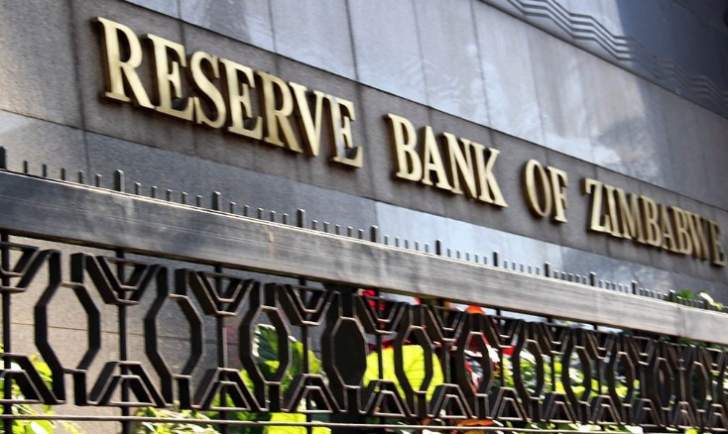
Victor Bhoroma A CLOUD of uncertainty prevails on Zimbabwe’s foreign exchange market as the country draws closer to the harmonised elections to be held by August next year.
The disparity between the market exchange rate for foreign currency and the manipulated formal exchange rate tells a story of excessive government control on the economy despite the consequences of such to livelihoods and business.
Currently, there are wide-ranging prices for foreign currency with the auction rate pegged at US$1:ZW$458,4 while the interbank rate is soft pegged at ZW$465,4.
On the open market, the rate has accelerated to ZW$800 for electronic money and ZW$700 for cash (Zimbabwean dollar notes).
Repeated failures Zimbabwe has not had a consistent currency or consistent foreign exchange policy for decades. The auction system (launched in June 2020) failed to create foreign exchange allocation efficiency or instil confidence in the market.
At the heart of the failure is the fact that the auction allocation mechanism does not follow the basic principles of a Dutch auction market on which it was modelled.
The amounts to be auctioned are not communicated before the auction, settlement is not done within 48 hours as communicated on launch, allotments to winning bidders are only done partially (at the discretion of the central bank) and selected bidders jump the settlement queue ahead of earlier winners.
Similarly, the interbank market which was reintroduced in May 2022 (After the August 2008 and February 2019 failed attempts) has not helped to bring willing-sellers on the market due to evident manipulation by the central bank.
- Chamisa under fire over US$120K donation
- Mavhunga puts DeMbare into Chibuku quarterfinals
- Pension funds bet on Cabora Bassa oilfields
- Councils defy govt fire tender directive
Keep Reading
In recent history, the Zimbabwean economy collapsed in 1999-2000, 2006-2008 and 2019-2020 due to hyperinflation induced by excessive printing of the domestic currency.
At the core of the foreign exchange problem is the government’s desire to control the central bank monetary policy and print money to fund various government projects or programmes.
The preference to trade in hard currency and in cash points to lack of trust in the central bank’s unsound and inconsistent policies over the years.
However, the lack of foreign exchange reform has far-reaching consequences on the whole economy.
Impact to viability in agriculture Zimbabwe has been food insecure for several years. The country relies on other African countries (South Africa and Zambia) and other global suppliers, such as Brazil and Russia for food security by importing grain worth at least US$1 billion annually.
The exchange rate remains one of the key constraints faced by local farmers who buy inputs and incur costs in foreign currency. Cotton, maize, soya, wheat, sunflower, and traditional grain farmers must work with producer prices set by the government in local currency.
The effect of inflation means that viability in farming is compromised by late payments.
Currently the government is paying ZW$75 000 plus US$90 for traditional grains and maize, ZW$171 495 plus US$90 for soya beans and ZW$205 795 plus US$90 for sunflower.
Due to the disparity between the various foreign exchange rates and the depreciation of the local currency, producers have started demanding full payment for delivered produce in foreign currency.
The source of the problem is the spread between the auction rate and the free market rate. A liberalised and truly reflective foreign exchange market can address these challenges faced by farmers and restore viability in agriculture.
Tobacco farmers who get paid 60% of their deliveries in local currency will also be happy to see a market determined exchange rate.
Impact on industry competitiveness Locally manufactured products already face competitiveness challenges on the export market because of the high production costs in the economy. The 40% surrender requirement on all exports is eating into the slim profit margins earned by exporters.
This is compounded by the fact that 20% of foreign currency sales deposited with local banks are converted to local currency using the pegged interbank rate.
Producers are now diverting most of their products to the informal market (Cash and Carry tuck-shops) where they can be paid US Dollar in cash, while evading the stringent foreign exchange controls and tax obligations.
With costs of production aligned to the parallel market, producers do not have any incentives to be fully tax compliant, to fully formalise their operations or boost productivity. This has put a dent on government efforts to formalise the economy and plug tax leakages in the market. There would be no need to evade taxes in foreign currency, stash loads of foreign currency at business premises, offload excess local currency or even adopt multiple pricing models if the exchange rate was close to market determined.
This means the existence of a local currency (without a market-based exchange rate mechanism) is acting as a global tax on all exports from Zimbabwe. The exchange control measures are also hurting exports of manufactured merchandise in a period when Zimbabwe needs to prepare for the Africa Continental Free Trade Area (AfCFTA).
Impact on mining sector growth Miners are currently calling for the review of the retention threshold. The current export retention scheme permits exporters (including miners) to retain 60% of the export proceeds and surrender 40% to the central bank.
If the 60% is not utilised within four months, the central bank will confiscate another 25% to take the total surrender requirement to 65%.
As a result of the wide discrepancy between the pegged formal exchange rate and the market rate, miners are losing 35% of their earnings due to the surrender requirements or US$0,35 per every US$1 in exports.
With miners paying for taxes, fuel, electricity and almost all consumables in foreign currency, foreign exchange regulations are a punitive tax to business viability and deterrent to further investment into mine development or beneficiation.
Impact on financial services Foreign Currency Accounts (FCA) deposits with local banks have grown tremendously to over US$1,8 billion in the last two years due to high levels of inflation in the local currency and lack of confidence in the formal foreign exchange system.
This underscores the pace of re-dollarisation in the market. However, the central bank is worried that commercial banks are not lending these depositors’ funds to the productive sector to spur economic growth.
Real lending in the economy has declined from over US$1,7 billion in 2014 to less than US$700 million in 2021. Local banks have borne the brunt of currency changes in the past with the sector suffering extensive losses when all loans advanced in US dollar were converted to local currency as provided for by the law.
Lack of clarity on currency reforms, legal tender, inefficient foreign exchange system and low confidence in the central bank means that banks will take a cautious approach to lending in foreign currency. This has resulted in a significant drop in interest income and closure of various bank branches across the country.
Impact on labour, households Zimbabwe has been hit by a catastrophic brain drain with critical skills leaving the public and private sectors for neighbouring countries and greener pastures abroad.
The main challenge is that salaries and remuneration cannot keep pace with inflation and exchange rate movements which determine prices.
Buying power and living standards have dropped, leaving many households in abject poverty. A stable exchange rate and prudent money supply growth can address this destructive emigration of skills while improving disposable incomes for households.
Impact on power generation Zimbabwe has rolled back 6-to-12-hour power cuts to manage domestic demand, with peak shortfall exceeding 500MW. Part of the shortfall is being augmented through imports from Mozambique, Zambia, and from the Southern Africa Power Pool (SAPP).
The power utility has repeatedly cited exchange rate disparities between the approved tariff of US$0,9KW/h, the effective tariff if the market rate is used and the discrepancy with the cost of producing or importing electricity from the region.
The power cuts are costing the country millions daily and pose a threat to economic growth targets, yet a sustainable solution remains elusive.
Overall, the Reserve Bank of Zimbabwe is very much conflicted on foreign exchange management because on one hand it needs cheap foreign currency from exporters to pay for its debt and fund foreign expenditure by the government (continuation of quasi-fiscal operations), while on the other hand it needs to manage the rate of inflation by hook or by crook through manipulating the exchange rate.
To ensure currency stability, the central bank must end all quasi-fiscal operations which will enable it to curb money printing and institute a market determined exchange rate by allowing commercial banks to be matchmakers on the interbank market (as is done in most countries in Africa).
Inevitably, the exchange rate will increase to match available domestic currency or demand but will stabilise if money printing is stopped.
Commercial banks must be allowed to adjust exchange rates according to demand and supply mechanisms in the economy with no central bank manipulation.
In conclusion, the central bank must not be allowed to contract any resource backed foreign debt without parliamentary approval as this brings conflict on how to settle the debt while allowing the exchange rate to be market determined.
A pegged exchange rate remains the biggest deterrent to sustainable economic growth and a pain which the government is avoiding at all costs even if it means sinking into record debt levels that far outweigh the benefits of pegging the exchange rate.
- Bhoroma is an economic analyst. He holds an MBA from the University of Zimbabwe (UZ). — vbhoroma@gmail.com or Twitter @VictorBhoroma1.










